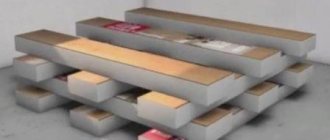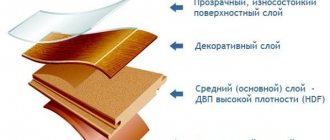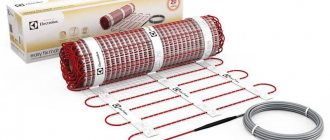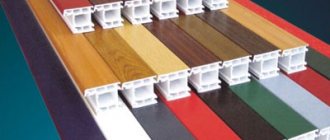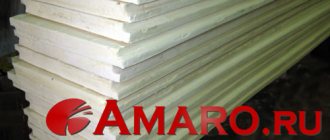The desire to make a balcony, loggia, or dacha beautiful is so natural. Why not bring beauty and comfort to such necessary rooms? But the question arises: Is it possible to lay laminate flooring in an unheated room? Owners of country houses want to know the answer to this question. Many who have already taken the risk of laying a laminated floor in their country house share their experience and talk about the results. Some people are doing well, while others have failed in this matter. What to do to ensure a good result?
Is it possible to use laminate flooring in an unheated room?
Why is this flooring material so good that it is even chosen for summer cottages? It has many advantages, both in appearance and in quality and performance characteristics:
- Strength and wear resistance are a very necessary quality, simply necessary for a country house, where shoes bring much more dirt into the house than in a residential apartment. The most durable and wear-resistant material is class 33, but its cost is higher, although it is justified. Laminated panels, even of this class, must be purchased by choosing a manufacturer that has proven the quality of its products on the market.
- Harmlessness - that is, the material will not cause harm to human health. Although laminated panels are not completely natural wood, if they have a certificate of conformity and emission class E0, E1, they are harmless to residents.
More details about this here: Is laminate flooring in an apartment harmful?
- Service life depends on the class of flooring material, quality, and manufacturer. Manufacturers provide a warranty period of 20 years for some types of laminated coating.
- Laminate flooring is durable when used properly and in the absence of constant or prolonged exposure to moisture and sudden temperature changes.
- Flooring material for the dacha should be selected that is resistant to frost and has a thickness of 10-12 millimeters. Thicker and higher-quality panels are most often treated with moisture-resistant impregnation; this is simply an ideal option for using laminate flooring in an unheated house.
- A wide variety of colors, textures and themes will allow you to choose the most suitable look: a wide range of shades, imitation of natural wood, decorative stone, tiles.
The above list of advantages of flooring still does not answer whether it is possible to lay laminate flooring in a dacha in the absence of heating, when winter lasts several months and has quite long sub-zero temperatures.
The answer is: it is possible, but subject to the correct choice of material and high-quality installation.
Climatic conditions for storage
Laminate flooring in warehouses must be stored in its original packaging. It is advisable to make sure of this before purchasing the material and delivering it to the repair site. After delivery to an apartment or house where renovation work is being carried out, it is also not recommended to completely empty the material from the packs, especially if it will not be put into work immediately. It is important to leave it in the room where it will subsequently be installed for several days so that it “gets used” to the operating conditions.
If the laminate will be put away for storage, then it is important to place it in a place where there will be a microclimate suitable for the coating.
Table. Conditions for storing laminate flooring.
| Parameter | Meaning |
| This is +18 degrees or more. The room must have heating - laminate should not be stored in a cold place. The minimum temperature can be +5 degrees, and then only for a short time. | |
| 50-60%, no more than 75%. | |
| In stacks, horizontally. The height of one stack should not be more than 4.5 m, otherwise the pressure on the underlying layers of the laminate will be excessive. | |
| Must be at least 1 m. |
Also, the room where the laminate is stored should be completely free of drafts. The packaging must not be damaged. It is important to ensure that nothing can fall onto the laminate stack. Nothing is placed on top of it either.
For individual lamellas remaining after the completion of the repair, the storage conditions should be exactly the same, especially considering that the material is no longer packaged. A heated pantry or the top of a regular cabinet is suitable for storage.
Which laminate is better to choose for a summer house?
Let's figure out what you should pay attention to when choosing flooring:
- Moisture resistance.
The main enemy of laminated parquet is water. If the coating is exposed to water or moisture for a long time, the panels may swell and become deformed. The floor covering most likely needs to be replaced, at best - partial, when only damaged panels are replaced. To install laminate flooring in an unheated wooden house, you should use a moisture-resistant type of flooring. This requirement is the main one.
Moisture-resistant laminate is suitable even for the bathroom. - Price.
Of course, when choosing flooring for your dacha, you would like to save money while getting high-quality material. It is hardly possible. You have to pay more for quality. In addition, moisture-resistant panels are more expensive than regular ones. You can purchase cheaper flooring material in cases where the country house has heating and the load on the coating is low. Otherwise, you should opt for more expensive samples. If you need to choose high-quality flooring for a fairly expensive house outside the city, you should take a closer look at solid larch; this material is characterized by high moisture resistance, durability and at the same time is very aesthetic. - Strength and wear resistance.
Priority goes to the laminated coating, which has class 33 strength and wear resistance and a board thickness of 10-12 millimeters. This material is durable and almost not subject to deformation from various influences. For a summer house, you can choose a slightly cheaper material: 31-32 classes with a board thickness of 10-12 millimeters. This is also a durable and wear-resistant material, but costs a little less. - Decor.
The floor in a house outdoors should correspond to it, so it would be appropriate to decorate it with panels that imitate natural wood. This decor will suit any interior, including a country one.
Other selection options
Everyone tries to choose a finishing option that suits their personal taste. When making a purchase, we recommend that you consider the following nuances:
- There is a finish that imitates wood. A floor treated with this material is called traditional. At the same time, the treated surface is smooth and even.
- The texture of natural laminate has improved characteristics compared to a traditional product. Brightness and shine make the finish more like parquet. Moreover, this solution has a lot of positive reviews, even from professionals.
Instead of a glossy laminate, it is better to choose a matte one.
To imitate a wooden finish, glossy laminate is often used. Keep in mind that after walking on such a surface, quite a lot of traces remain.
In turn, to imitate parquet, it is recommended to purchase waxed laminate. A good choice for a dacha would be to decorate it in country style.
Features of laying laminate flooring in the country
Modern laminated panels are equipped with special locking elements that simplify installation work. It is possible to install a laminate floor yourself. Preparatory work should be done first:
- Preparing the base. Before starting installation work, it is necessary to prepare the base; it must be almost perfectly leveled and dry;
- Selecting a substrate. A dense underlay layer will level out minor unevenness of the subfloor and increase the thermal insulation properties of the floor covering;
- The technological gap is always observed when installing a laminated coating. The size of the gap from the wall to the edge of the covering is usually 1-1.5 centimeters. The presence of an expansion gap allows the coating to increase or decrease in size within a small range due to fluctuations in temperature and humidity in the room.
Before installing the floor covering, the floor should be insulated
Preparing the base
In an unheated country house at sub-zero temperatures, particularly careful preparation of the floor is necessary.
- First, the old floor covering is meticulously inspected; most often it is a plank floor. If it is in poor condition, the boards are rotten, the floor creaks or wobbles, it should be dismantled. If the floor is basically strong, the joists are good, only some floorboards have become unusable: rotted or damaged, then only they must be replaced.
- After the wooden floor has been repaired, it is worth laying plywood sheets or chipboard on top for additional thermal insulation and to level the surface of the plank base, since unevenness is unacceptable for subsequent laying of the laminated covering. The plywood sheets are attached to the wooden base using stainless steel screws so that could not damage the plywood sheets with rust.
- Laminate flooring in an unheated country house should be laid on a dense substrate that can protect the coating from damage by mold, mildew, etc. If your country house has a concrete base, then you should cover it with a layer of cement-sand screed. This will level the surface of the base and protect it from freezing, leaving the laminated flooring drier. For waterproofing, you should lay a thick polyethylene film on the screed; it will protect against dampness from below, if it appears.
Choosing a substrate for an unheated room
We found out that the answer to the question of whether it is possible to lay laminate flooring in a dacha is in the affirmative - with the correct choice of materials for the coating itself and the substrate. We have considered the choice of laminated parquet. Now let's discuss which backing material is best to choose from the huge variety on the market.
Kitchen block
The load on the floors in the kitchen is extreme, since in the average family this part of the house is constantly occupied by one or more residents. The peculiarities of their activities are such that something constantly falls on the floor, drips, it is smeared and impregnated with various substances.
Do not also forget about high humidity and direct contact with liquid. Based on the above, you should select material of class 32-33. It has low thermal conductivity, but a well-installed water heating system of a certain power will warm the room very well (pro
Laying laminated flooring on an unheated dacha
Adviсe:
- Laying laminate flooring in unheated rooms should be done only using the “floating floor” method, while the gap between the wall and the floor covering to compensate for changes in the size of the laminated floor due to changes in humidity and temperature should be slightly larger (1.5-2 cm) . For insulation, mineral wool or extruded polystyrene foam is often used as a thermal insulation material.
- A very important condition for using a laminated floor in a country house is to not allow sudden changes in temperature in the house, because Low sub-zero temperatures are not as harmful to this flooring material as sudden changes in temperature values. So, it is completely unacceptable to arrive at the dacha in winter, in the cold, and immediately heat the house to 20 degrees Celsius. No material can withstand such a difference.
To install a laminated coating in a dacha, you will need a certain set of tools:
- jigsaw - necessary for cutting panels. If you don't have one, it's worth renting. This tool will greatly facilitate your work when laying the floor;
- hammer, block - used to tap panels during installation;
- tape measure, ruler - for measurements.
You should also purchase special spacer wedges that will help maintain the same size of technological gaps between the wall and the coating. A gap must be left.
When you have decided whether it is possible to lay laminate flooring in an unheated room, you should familiarize yourself with the sequence of work for laying the flooring:
- The subfloor must be prepared and leveled in advance before laying the flooring. Height differences of more than 2 millimeters are not allowed.
- To protect against high humidity, a layer of dense polyethylene film is laid. The individual pieces are laid out with an overlap, it is even worth making spades on the lower part of the walls by about 10 cm. The edges of the sections are fastened with tape to form a solid canvas that does not allow moisture to pass inside.
- A layer of substrate is laid on top. If it is sheet, then the sheets are laid out without overlaps, close to each other, the joints of the sheets or rolled pieces are glued with tape.
- Laying begins from the corner of the room farthest from the entrance, only. The panels should be placed with their long sides in the direction of the light rays falling from the window, then the joint lines will be less noticeable and the floor will look better.
- The first row of lamellas should be laid out at the required distance from the walls, leaving a technological gap. The gap for the conditions of an unheated house should be 1.5-2 mm; it should subsequently be closed with a plinth.
- The first laminated board is placed in a corner on the underlayment. Second panel:
- with click locks - apply it to it at an angle of about 20° and do not press very hard until it clicks;
- for lock locks - directly, using a hammer and a block;
- The entire first row of panels is laid out in this way, connected using locking elements, the last panel is cut to the required size to fit into the remaining space against the wall - taking into account the gap.
- The cut from the last panel of the previous row is the first in the next row.
- Each subsequent row should be positioned in relation to the previous row so that the joints of the panels do not coincide, but are offset by at least 30 cm. In this way, the checkerboard principle is observed.
- By analogy with the first row, the remaining rows are laid.
- Differences will arise only in the installation of the last row of panels. As a rule, the boards of the entire last row are cut lengthwise to the required width to fit into the remaining space against the wall - taking into account the gap.
- When connecting laminated boards, it is necessary to cover the locking elements with a special sealant for laminate. Any excess mixture that appears must be removed immediately with a soft cloth.
So, now it’s clear whether laminate flooring can be laid in an unheated room and how it should be done.
Base type
The base of the coating is HDF board. Its composition can be different, and it dictates the properties of the laminate and its resistance to frost. Sometimes glued wood chips subjected to pressure are used. In other cases, large wood fibers are used, which are also glued together and compressed. The option with large chips is more resistant to frost and temperature changes. Price also plays an important role. Cheap laminate is made from cheap wood. And it is less resistant to frost. Therefore, you should give preference to expensive products.
- It is preferable to install it on a concrete base, which is carefully leveled beforehand. It “walks” less compared to wood.
- Laminate flooring must be protected from moisture absorption. Therefore, a polyethylene backing is preferable. The best option is high-quality waterproofing, as well as treatment of seams.
- The thicker the boards, the less likely they are to deform.
- If there is always high humidity at the dacha, then installation should be carried out using floating technology. In this case, the expansion gaps are larger than those recommended for ordinary premises.
- The higher the class, the greater the safety margin of the coating.
Advice!
Laminate does not tolerate sudden temperature fluctuations. If you come to your dacha in winter, you should warm up the house gradually. Consultants in stores offering construction or finishing materials often have to answer customers’ questions about the possibility of using laminate flooring for their summer cottage. Due to the lack of their own experience, they cannot provide a clear solution to the problem.
Sealing seams
An important step when installing laminated parquet is sealing the seams between the slats. High-quality, expensive material is subjected to treatment of the locking elements of each panel with wax compounds at the production stage, which increases the water resistance of the flooring material.
When using flooring in winter in an unheated country house, the laminated material must be protected by sealing the seams, this will increase the water resistance of the coating.
Read more here:: Do you need a sealant for laminate flooring?
In the article, we looked at the question of whether laminate flooring can be used in an unheated room in a country house, how to select materials and how to properly install the flooring. By doing things right, you ensure that your laminate floor will last a long time.
Spending time in a beautiful and cozy home thanks to laminate flooring is a pleasure. We hope that it will also serve your grandchildren, who will be grateful to you. Good luck!
Plumbing and balcony
These rooms are perhaps the most popular when it comes to installing heated flooring. The reason is that the temperature in them drops sharply due to high humidity in both cases and open air access in the case of a balcony.
In fact, it is necessary to maintain a temperature of at least 28 degrees Celsius for normal use of these parts of the house. You can regulate the temperature using a thermostat and regulators, which will also provide additional protection against excessive heating of the laminate.
Directly for the laminate, when choosing it for installation in these parts of the house, it is necessary to establish the following requirements:
- mandatory water-repellent layer;
- high quality surface protective layer;
- joints treated with sealant.
Usually all this corresponds to laminate of 32-33 classes.
Bedrooms and corridor
The most suitable laminate for these rooms is the one with a matte surface.
It must also meet a number of requirements:
- high degree of sound absorption;
- antistatic effect;
- moisture resistance;
- increased fire protection.
Usually a 21-22 class coating is suitable. Electric mats or infrared film are used as a heating system. The installation of the system does not even need to be laid on a high-strength screed, because... A thin finishing layer will be enough to eliminate any unevenness.

